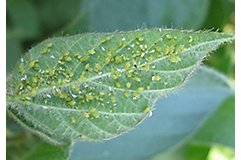Farmers are incredibly adaptable. Whether they’re cultivating fields of row crops, citrus orchards or acres of vegetables, every farmer takes on new challenges with each season, applying new lessons and ideas to meet them. New discoveries and technologies come along to help farmers do more and do it better. Developing these kinds of solutions, however, means taking a long view—considering not only what is needed today, but what farmers, the food chain and consumers will want for tomorrow. Active ingredients like Isoclast™ active, with lower use rates and reduced environmental persistence, give farmers a forward-thinking choice in pest control that combats today’s issues in the fields with longterm benefits for farmers and their land.
Our InnovationProtecting Your Food with Isoclast™ Active
Farmers work hard to provide consumers with healthy, vibrant, nutritious produce. Learn how Isoclast protects tomatoes, grapes, oranges and more—while helping maintain beneficial insects in the fields.







